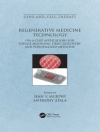‘PAR is the ultimate in social justice practice. I suggest that PAR should be the basis for all nursing research. This book will provide you with the basics for getting started.’
ó Patricia J. Kelly, Ph D, MPH, APRN
University of MissouriñKansas City (From the Foreword)
Participatory action research is a qualitative research method conducted in collaboration with a community of people in order to effect changes in the community that are relevant to the residents. This is a practical, ‘how-to’ resource for conducting participatory action research that guides readers, step by step, through planning, conducting, and disseminating nursing research using this qualitative design. It is part of a unique series of seven books devoted to nursing research using qualitative designs and methods. Examples from actual research along with author commentary illustrate potential pitfalls and challenges that may occur during the process and how to resolve them.
Written by a leading scholar of nursing research and nurse experts in participatory action research, the book describes its philosophical underpinnings and state-of-the-art techniques, and provides a concrete road map for planning and conducting studies. It considers why this particular research method is best suited for a particular study, ethical considerations, and potential obstacles. The book also discusses how to ensure rigor during a study, providing examples from scholarly literature and the authorsí own work. Each case example features a description of the study, including why the investigator decided to use participatory action rather than another research design, how he or she solved gatekeeper and access-to-sample issues, and institutional review board concerns. Also included is a discussion of how to collect and analyze data and how to disseminate findings to both the scientific community and research participants. With a focus on practical problem solving throughout, the book will be of value to novice and experienced nurse researchers, graduate teachers, in-service educators, students, and nursing research staff at health care institutions.
Key Features:
- Describes, step by step, how to plan, conduct, and disseminate participatory action research
- Delivers new designs and methods
- Focuses on solving practical problems related to the conduct of research
- Features rich nursing exemplars in a variety of health/mental health clinical conditions in the United States and internationally
Daftar Isi
‘
Contributors
Foreword Patricia J. Kelly, Ph D, MPH, APRN
Series Foreword
Preface
Acknowledgments
1 Participatory Action Research
Karen Lucas Breda
2 State of the Art of Nursing Research in Participatory Action Research
Karen Lucas Breda
3 Participatory Action Research Procedures
Anne Watson Bongiorno
4 An Assessment of a Prototype Audit and Feedback Process to Improve Inpatient Pain Documentation
Matthew Peters
Commentary
Lauren Clark
5 Community-Based Participatory Research in the Dominican Republic: The On-the-Ground Story of Conducting International Participatory Research
Jennifer Foster
6 Participatory Action Research: One Researcher’s Reflection
Marie Truglio-Londrigan
7 Community-Based Participatory Research: Lessons From the Field
Bonnie H. Bowie and Lauren Valk Lawson
8 A UniversityñTribal Community-Based Participatory Research Partnership: Determining Community Priorities for the Health of Youth
Janet Katz
9 How to Conduct Participatory Action Research: An Exemplar
Lorna Kendrick
10 Exploring Parental Perceptions of Healthy Eating and Physical Activity Using the Photovoice Method
Nicole Mareno
Appendix A List of Journals That Publish Qualitative Research
Mary de Chesnay
Appendix B Essential Elements for a Qualitative Proposal
Tommie Nelms
Appendix C Writing Qualitative Research Proposals
Joan L. Bottorff
Appendix D Outline for a Research Proposal
Mary de Chesnay
Index
‘Tentang Penulis
Mary de Chesnay, Ph D, RN, PMHCNS-BC, FAAN, is professor at Kennesaw State University, School of Nursing, Kennesaw, Georgia.












